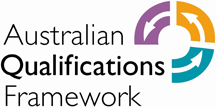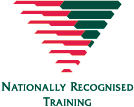Running a project efficiently and effectively requires careful planning, coordination, and execution. Whether you’re a seasoned project manager or a first-time project leader, following a structured approach can make all the difference between a smooth, successful project and a chaotic one. In this blog, we will walk you through the essential steps to run a project that meets its objectives and delivers results.
How do I plan the project?
Define project Objectives
The first step in running a project is to define clear and specific objectives. What do you want to achieve with this project? Understand the goals, outcomes, and key deliverables. Make sure these objectives are realistic, measurable, and achievable within the given constraints. Involve key stakeholders during this stage to ensure everyone is on the same page and there is consensus on the project’s purpose.
Assemble the Right Team
Identify what skills you need then select the team to meet those needs. The success of a project largely depends on the tea. Be clear on the roles and responsibilities of each team member and ensure they align with their skills and interests. Always remember good communication skills are one of the essential skills for project success.
Develop a Comprehensive Project Plan
Creating a detailed project plan is essential for a smooth project. It is a way of making sure everyone knows the direction and limits of the project and what each individual has to complete when. To do this you need to, up front, state the clear purpose of the project as well as its scope. The scope defines the limits of the project. Importantly this prevents ‘scope creep’ where clients or team members include ‘nice to do’ additions in your project. This is a common cause of cost over runs. The project plan should then be broken down into smaller tasks, with accountable action officers and deadlines, the allocated resources to each section of the project, and dependencies between different activities. Each set of actions should include a ‘deliverables’ – tangible outcomes – which build to milestones and can be used to track the progress of the project. In addition the plan must include or be paired with a project budget. There are project management tools to help you organize and track progress effectively such as Gantt charts or if it is a simple project some people just use a spreadsheet. Ensure your plan is flexible enough to accommodate changes and unforeseen challenges that may arise.
How do I implement the plan?
Communicate Clearly and Regularly
Open, regular and transparent communication, covering progress, challenges and successes, is essential for project success. Address any concerns or conflicts promptly and encourage feedback from team members and stakeholders.
Monitor and Control Progress
The project must be tracked against its plan and the planned deliverables and milestones. Keep an eye on the budget, timeline, and quality of deliverables. Identify any deviations early and correct early. Regularly assess risks and implement mitigation strategies to prevent potential roadblocks from derailing the project.
Adaptability and Flexibility
In any project, changes are inevitable. Be prepared to adapt to new information, shifting priorities, and unexpected challenges. Embrace that agile mindset without compromising the project’s overall objectives.
Celebrate Achievements and Learn from Failures
Celebrate milestones and achievements as the project progresses. Acknowledging the team’s efforts boosts morale and motivation. Equally important is a no-blame culture but learning from failures and setbacks. Conduct post-project review to understand what went wrong and how to prevent similar issues in the future. Continuous improvement is key to enhancing future project performance.
In summary, running a project successfully requires careful planning, clear communication, a dedicated team with the right skills and on-going monitoring of progress. By following the steps here you will increase the likelihood of achieving your project’s objectives while maintaining a positive and collaborative work environment. Remember, planning, flexibility, and a willingness to learn are essential traits of a proficient project manager. Keep refining your project management skills, and with each project, you’ll become better at driving success and delivering outstanding results. Good luck!
You can grow your skills and study a nationally recognised micro-credential ‘undertake projects’ and, should you choose, use it as part of your Diploma of Business. Leadership and Management or your Diploma of Human Resources, online though the Australian Qualifications Institute.
If you would like to study a nationally recognised micro-credential online get in touch with Australian Qualifications Institute at enquiries@aqi.edu.au for personalised counselling in broadening your framework of skills with micro-credentials.


